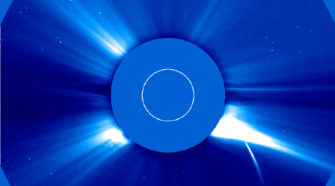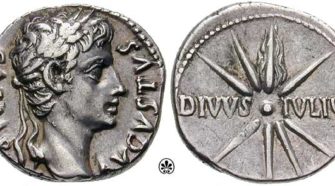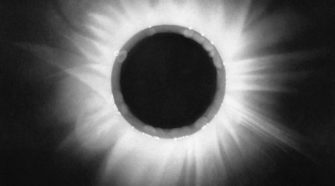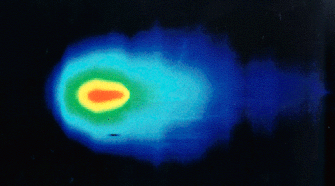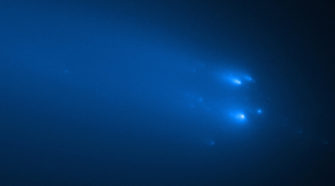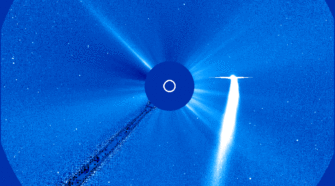Comet
Comet of the Week: SOHO C/1998 K10 and C/1998 K11
C/1998 K10’s Perihelion: 1998 June 1.88, q = 0.006 AU C/1998 K11’s Perihelion: 1998 June 2.06, q = 0.005 AU Various previous “Ice and Stone 2020” presentations have discussed the impact that the joint NASA/ESA SOlar and Heliospheric Observatory (SOHO) mission – and in particular the onboard LASCO C2 and C3 coronagraphs – has had …
Comet of the Week: “Caesar’s Comet” C/42 K1
Perihelion: 44 B.C. May 25.0, q = 0.22 AU The appearance of a bright comet is certainly a stimulus of important scientific investigations, and, under the right circumstances, in today’s society can also be a focus for popular culture, at least for a while. In more ancient times, however, when comets were still widely considered …
Comet of the Week: Tewfik X/1882 K1
Perihelion: 1882 May 17.5, q < 0.01 AU On May 17, 1882, the path of a total solar eclipse crossed northern Africa, the Middle East, and southern Asia. As total eclipses go, it was a relatively short one, with the maximum duration of totality – which occurred in present-day Turkmenistan – being only 1 minute …
Comet of the Week: IRAS-Araki-Alcock 1983d
Perihelion: 1983 May 21.25, q= 0.991 AU On January 25, 1983, the InfraRed Astronomical Satellite (IRAS) spacecraft was launched from Vandenberg Air Force Base in California. For the next ten months, until its supply of superfluid liquid helium coolant ran out, IRAS surveyed the entire sky in near- to far-infrared wavelengths, and its findings completely …
Comet of the Week: ATLAS C/2019 Y4
Perihelion: 2020 May 31.04, q= 0.251 AU Last year, when I selected the various comets I would be using for “Ice and Stone 2020”’s “Comets of the Week,” I did so with the knowledge – and even hope – that I might find it necessary to swap one or more such selections for current comets …
Comet of the Week: Bradfield C/2004 F4
Perihelion: 2004 April 17.09, q= 0.168 AU One of the most legendary comet discoverers of the 20th Century was the Australian amateur astronomer William Bradfield, who resided near Adelaide, South Australia. By trade a rocket propulsion engineer with the Australian government until his retirement in 1986, Bradfield began a systematic visual comet hunting effort at …

